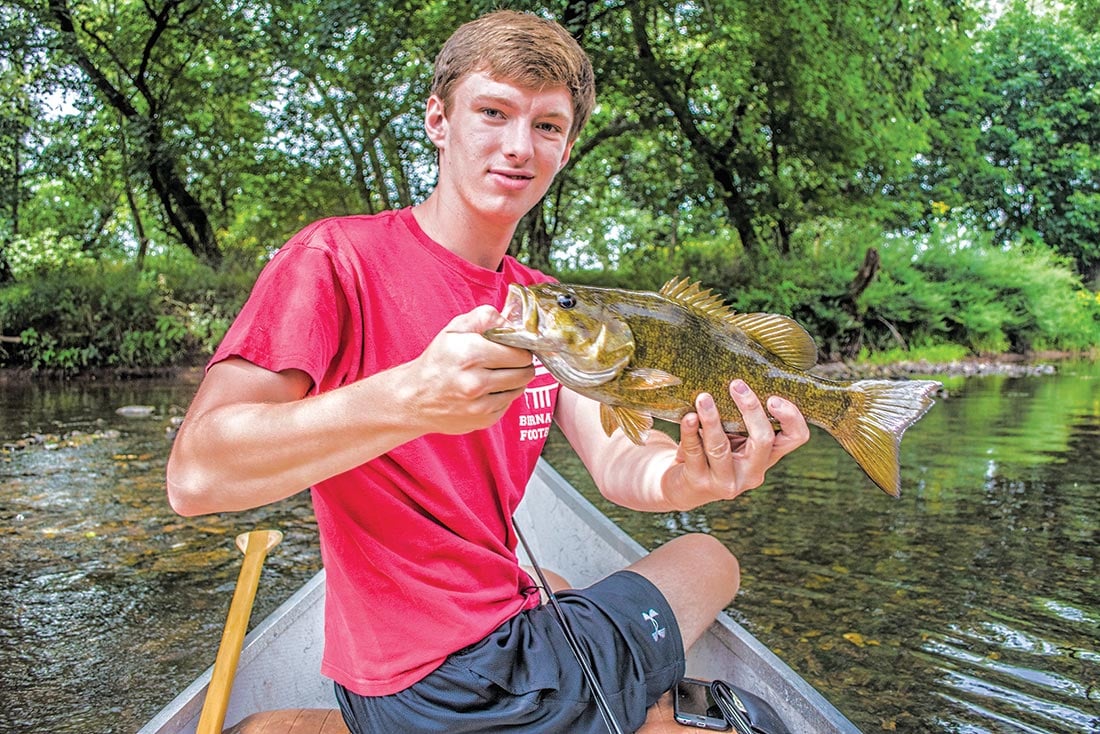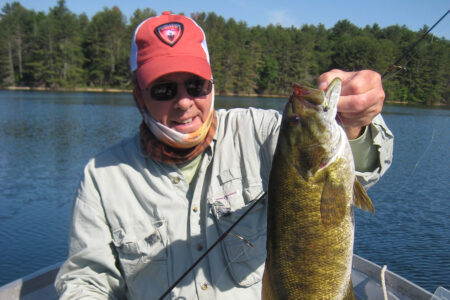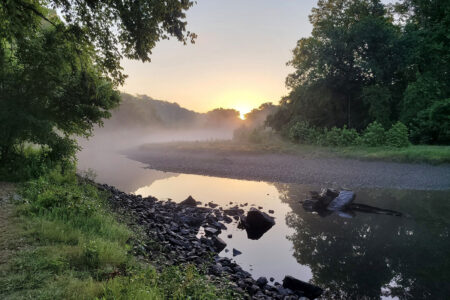As spring gives way to summer, consider working a stream for feisty smallmouth bass.
Despite this year’s stocking disrupted due to the coronavirus, some trout will remain in the rivers after Memorial Day, but another gamefish occupying these waters—smallmouth bass—may be more valuable to catch. Unless a serious heat wave arrives, by June the water will be plenty warm to wet wade, but not as heated as it will be during July and August.
This temperature difference means late-spring or early-summer smallies are more active and willing to chase down a plug or spinner. It’s also a great time to throw topwaters, and although one angler I know of insists on baitcasting gear and chuggers for big bass in small rivers, light tackle may better suit. Not only is it true that the average stream bass is about 9 inches long, and you might want to hook some; big bass will explode on little plugs, too. Whether you throw a Baby Torpedo, a scaled-down Jitterbug, a Puppy Spook, or one of many choices of little poppers—I most recommend these—the lure will be plenty visible to bass in clear water. It doesn’t need to make much commotion, because the bass are used to quiet, rather than being keyed-up to a lot of nonsense.

On one early morning in recent memory, my son and I got up and rode a half hour to a favorite river spot in the dark. We hiked in and began fishing shortly after first light, nailing a couple of average bass on little 1/8-ounce poppers. By casting them on 6-pound mono, our medium power St. Croix 5-1/2-foot rods got us plenty of distance. That mattered absolutely, as I’ll get to in a moment.
We had begun fishing a long seam between channel current and shallow slack, wading quietly. I had caught one right in front of me while letting Matt work his way downstream along that edge, as I cast across river and pulled one from the seam along the opposite bank. It got off where water drops off sharply.
All the while, I left a spot open, half hoping Matt would take it, half hoping he would leave it to me. Strong current boiled over rock before dropping into a hole about 8 feet deep. Before sun would get on the water, I got myself into position for a long cast. The plug reached the edge between calm surface and where that boil developed. Almost immediately, it exploded. The bass was hooked and dove to the hole’s bottom. Then it swiftly rose, leapt 3 feet straight up, and threw the plug. It wasn’t as big as some I’ve hooked and caught in this stretch, but would have measured every bit of 17 inches.
If you find current visibly leading into a hole, you want to aim for a current break, if that spot exists where current becomes visible. From where you can see the surface begin to waver and on forward, you can see the current undulating until it drops into the depths. That upstream edge is the perfect place to drop a topwater plug early in the morning, where perhaps a big bass has made itself vulnerable in shallows immediately behind it. There that bass will look upwards, not only for any forage, but for predator birds as well. When sunlight does get on the water, it’s still possible to hookup on topwaters, but look for shadowy nooks about 3 feet deep.
Evenings result in topwater catches, too, but morning comes after a dark night, instead of after many hours of daylight. The water is cooler and the mood has a freshness evening doesn’t have. What difference that makes to a big bass, I don’t know exactly, but this time of year, I would rather get up extra-early and be on the river fishing long before sunrise. As I say, you can count on the water being a little cooler than it will be in the middle of summer, and if you try to plan on going when it’s coolest on any given day, you’re fishing consistently.
Don’t overlook an opposite sort of spot. A coming article will say more about V-formation tailouts. So far, I’ve succeeded at such spots only with plastics during evenings later in the summer, but perhaps bass also occupy during late-spring mornings the tight spot where forage gathers into a funnel forming a stretch’s exit.



